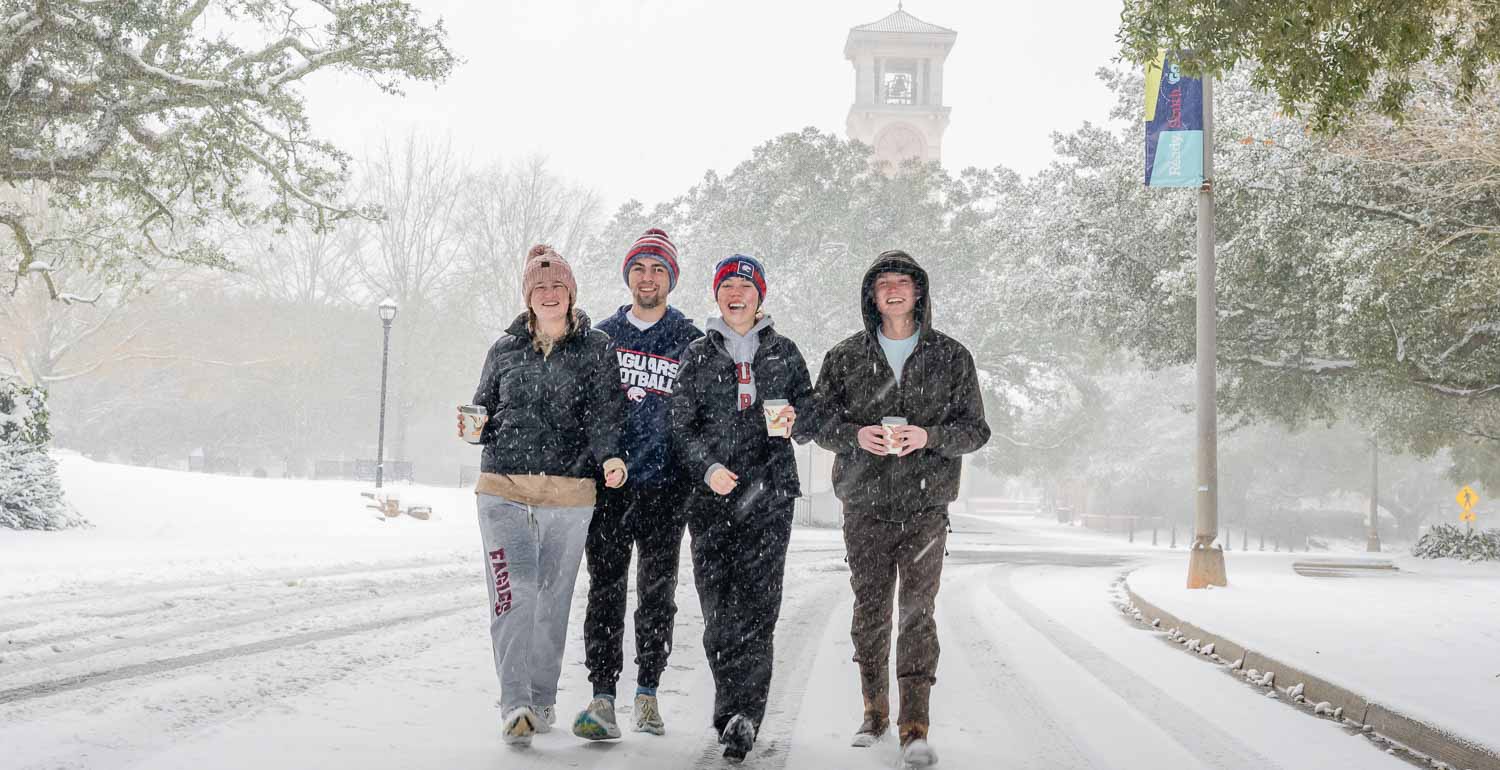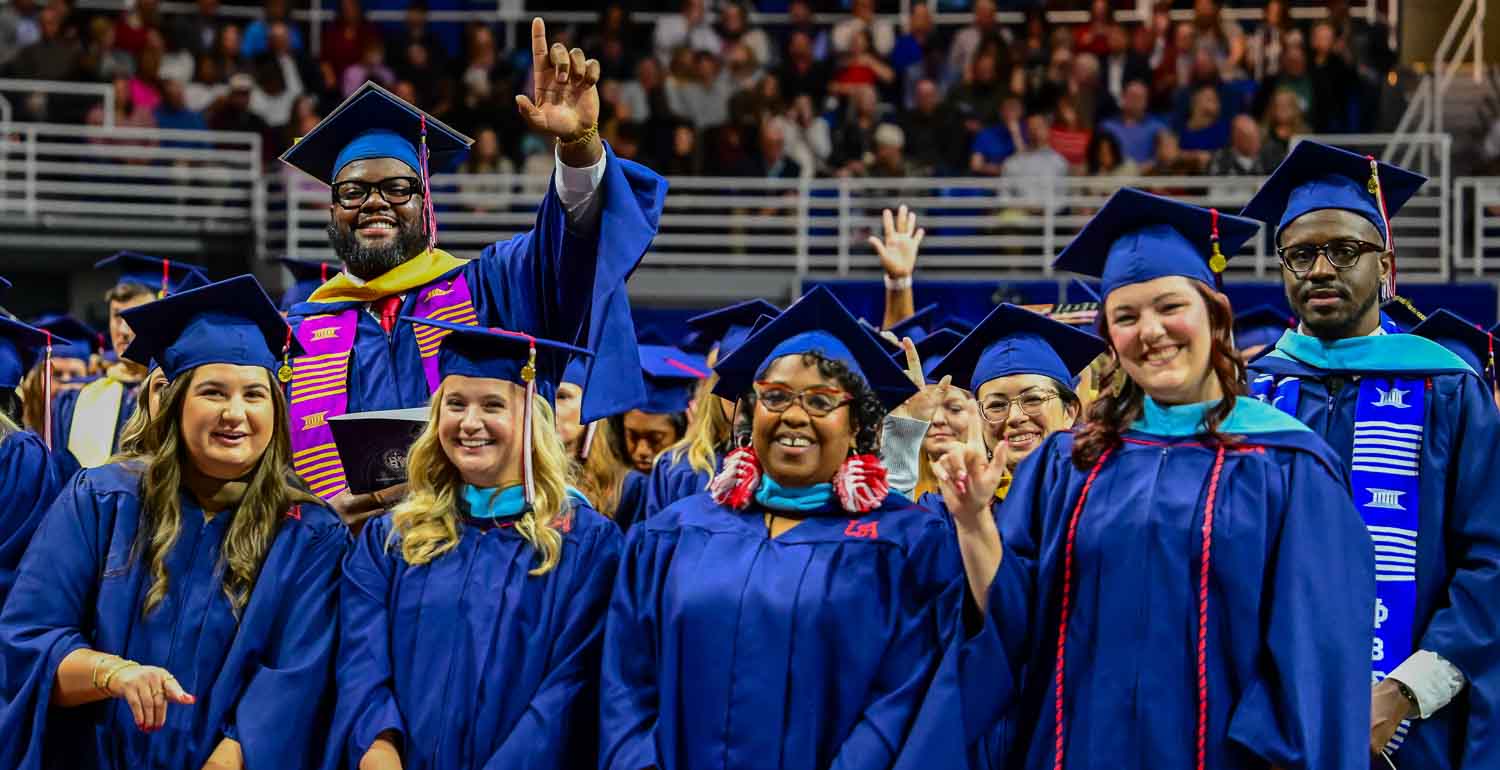Crisis Scenario: A Calm Amid the Storm
Posted on November 20, 2015

“I’ve got 10 red, two blacks and four greens,” a male voice blared through Hannah Beals’ radio. “Those are the first. There’s a lot more.”
Beals, a senior emergency medical services student at the University of South Alabama, was incident commander for a disaster scenario underway Nov. 19 at Battleship Memorial Park on the Causeway. The numbers and colors identify people and their immediate needs – burned, dead, severely injured – following the mock explosion and fire aboard a disabled cruise ship making an emergency stop at Mobile.
Beals responded calmly to the assessment team aboard ship as she turned to check on fellow USA students spread around her, ready to receive the injured and move them to nearby hospitals by helicopter or ambulance. “We’re ready. Bring’em out when you can move’em.”
The training scenario brought together faculty and students from the University’s emergency medical services program, nursing, the physician assistant program and the College of Medicine. Also participating were emergency professionals from around the area, including the Mobile Fire-Rescue Department, which ran a zip line for removing some injured from the ship to shore. In the drill, the cruise ship was the USS Alabama Battleship.
Beals, who will graduate from USA in 2016, is no stranger to real-life emergencies because she already works full-time for an ambulance service. Like many of her fellow students, Beals admits she enjoys the adrenaline of emergency medical care.
“I’d heard really good things about the USA program, so I took one class, and I fell in love with it,” she said, nodding to the action around her. “I love this. I enjoy the hands-on work to help people who need it, and I like the challenge to help them as quickly as possible.”
All around her, patients were being shuttled into treatment areas. Several of them wore make-up and false burn patches that look like the real thing. Treatment Officer Ashlye Smolha, a fellow student from d’Iberville, Miss., stopped to confer with Beals, then confidently moved on to another task.
“The drill is going well,” declared Scotty McArthur, clinical instructor of emergency medical services. He and fellow instructors observed the drill from a distance, letting the students learn from their mistakes, which is the drill’s purpose. “Everything is moving as smoothly as it possibly can. I’m very pleased with our students.”
“This drill lets the students think outside-the-box and be able to work with other disciplines in a chaotic situation,” McArthur said.
An hour into the drill, the last patient, a dummy, slid down the zipline, making it without mishap.
“That’s it,” Beals declared. “Good job! Everyone did what they were supposed to do.”
This was Beals’ second disaster drill, but it was her first time to be commander.
“I was pretty happy with how things went,” she said. “We got all the patients seen within the Golden Hour, which is the standard for emergency care in a disaster, so we met our goal.”
Goals are important to Beals, and she responded quickly when asked about her life goals.
“Right now, I am focusing only on emergency medical services, but that could change at some point,” she said. “Who knows? I could decide down the road that I want to be a doctor. If I do, USA would be my choice for that too.”
For more information about USA’s emergency medical services program, visit https://www.southalabama.edu/colleges/alliedhealth/ems/index.html.






